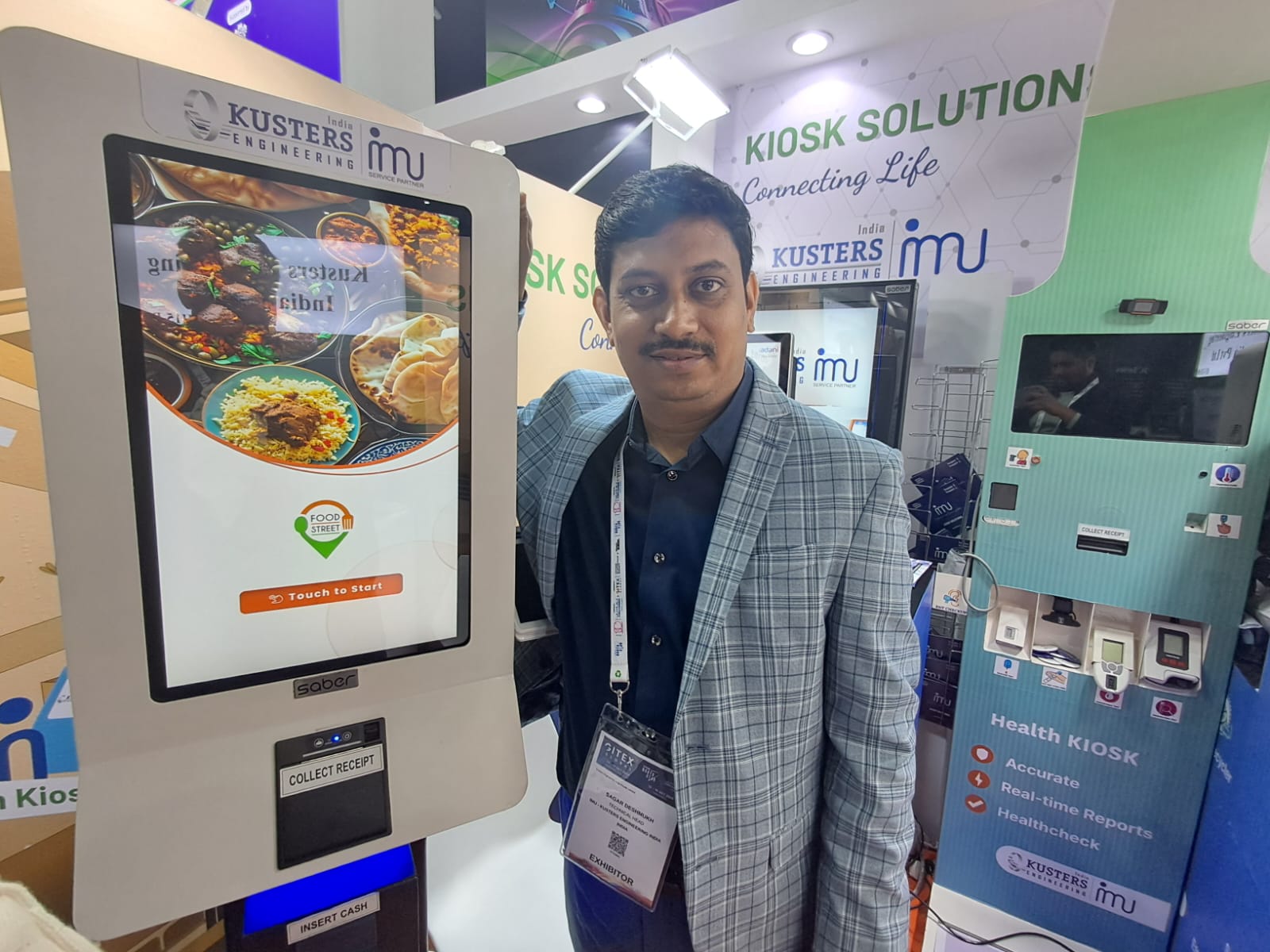The self-service kiosk industry is witnessing an explosive, albeit relatively nascent, growth phase in India, with the market expected to expand at a Compound Annual Growth Rate (CAGR) well over 11% through 2030. While globally established, the adoption of these interactive terminals—including self-checkout and self-ordering systems—is now accelerating across Indian retail, Quick Service Restaurants (QSRs), and hospitality.
Mr. Sagar Deshmukh, Director of Kusters India Engineering, a leading developer of software for online kiosk ordering, discusses the nascent but rapidly growing adoption of self-service kiosks in the Indian retail and food service sectors.
In your view, how is the self-service kiosk segment developing and growing in the Indian market today?
Globally, this segment is already expanded, but in India, it’s literally just starting—it’s still crawling. Currently, you don’t see retail self-checkout machines or full ordering kiosks widely across India, apart from a few outlets of major global chains.
However, there is a huge opportunity in this segment, especially considering the size of our country. We anticipate a large volume increase in retail self-checkout machines, food ordering kiosks, and even hotel check-in/check-out machines in the near future. This shift is primarily driven by the rising cost of manpower and minimum wages in India. The phase of low-cost manpower is ending, and with more people moving to the software industry, there is now a labour shortage for activities that can be replaced by kiosk technology.
From the end-customer standpoint, how receptive are Indian consumers to self-ordering and self-checkout, and what are the benefits for them?
Customers are very open to it, and the benefits are clear. Take the example of McDonald’s, which implemented self-service kiosks globally. Their internal reports showed a 20% growth in sales. Why?
There is a human tendency to feel nervous when ordering at a manned counter with a long queue behind you. You tend to rush and only order the first few items you see. However, when you use a kiosk, you have the option to surf everything, explore all the combinations, and discover items you wouldn’t normally buy. This increases both sales and the revenue of the outlet.
For Indian customers specifically, the kiosk removes the “shyness” factor. People are often hesitant or shy about completing a transaction, especially a small amount, in front of others. On a kiosk, you are the “king” of your transaction; you can pay easily by cash or card without any self-consciousness. Furthermore, in grocery retail (like at D-Mart or Reliance), self-checkout is the best option to quickly scan, pay, and get out, reducing the rush and saving time for customers buying only a few items.
Focusing on the restaurant segment, how do these front-end ordering kiosks integrate with and streamline the back-end kitchen operations?
This is critical, especially since many new Indian restaurants operate on a franchise model. Often, the staff member taking the order at the front is also tasked with preparing or serving the food, leading to an overloaded person and lost customers during the transition phase.
With our self-service food ordering kiosks, the order is placed by the customer right at the front of the shop. This order is instantly routed to a Kitchen Display System (KDS), which is fully integrated in the back-end. The kitchen staff is then fully engaged in preparing and serving the order, without the distraction of taking payments or dealing with queues. This streamlined process automatically leads to increased revenue for the business.
How does the integration of kiosks help manage the diverse order channels—like Swiggy, Zomato, walk-in customers, and parcel pickups—for the back-end staff?
While Swiggy and Zomato users will always exist, people still want to dine out with family. The main reason they avoid it is the rush.
With a kiosk system, a restaurant can serve more people in the same duration because the manual ordering time is drastically cut. This reduced rush makes customers feel more comfortable, encouraging more walk-in business.
Furthermore, our system can facilitate order-and-pickup. Customers can place an order via the kiosk—or even through an external channel like a mobile app—get a receipt with their order ID, and then simply pick up their order at the counter. This provides an alternative to third-party delivery, which sometimes results in cold food, allowing the customer to ensure their meal is fresh when they pick it up.
Which segment of the food or retail industry do you predict will be the biggest adopters of this technology moving forward: Fine dining, quick service, or retail?
I believe the adoption will be strongest in the Quick Service Restaurant (QSR) and casual dining segments—restaurants where people dine in.
The kiosk is not just for quick takeaway. We even offer features like pre-booking a table. The primary utility remains where customer flow management and efficient, accurate ordering are most crucial, which is currently the eating-in and take-and-go establishments.













